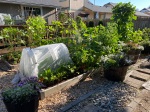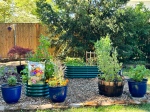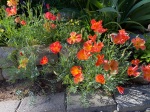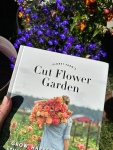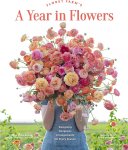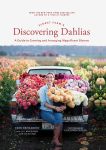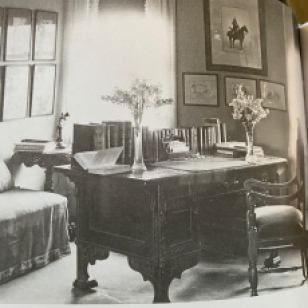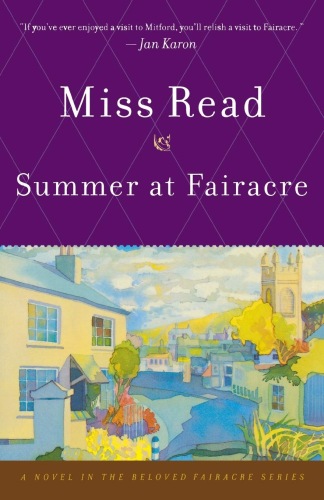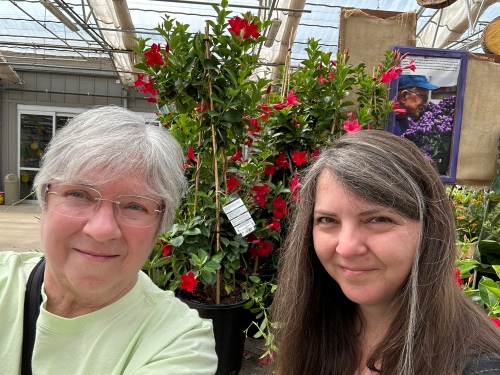
At the garden center…
My daughter and I love to garden. I will say right off, though, that her thumb is greener than mine! She and her husband (who also loves gardening) have an amazing garden and yard! I’m always in awe of their vegetables and their abundance of beautiful flowers and shrubs. They inspire me! After I had the dangerous oak tree removed from the back corner of our yard last fall, I found that I had a new patch of sunshine where there had always been shade. So I created my “Sunshine Garden,” a small patch for vegetables, inspired by Jamie and her husband. In the rest of the yard, I’ve focused on flowers.
- Jamie’s vegetable garden…
- My sunshine garden…
Whenever Jamie comes to visit me, we inevitably take a trip to the garden centers nearby. We love the inspiration we get from those trips. But in recent years, much of our gardening inspiration has also come from one particular flower farm owner and author, Erin Benzakein, of Floret Flower Farm. She and her husband, Chris, started Floret Flower Farm over 15 years ago, and they sell flower seeds to devoted followers internationally. Jamie and I love to order seeds from her!
- My Floret zinnias…
- My Floret amaranths…
- Jamie’s Floret marigolds…
Erin has published three books, all of them filled with excellent information and gorgeous photography. Her husband, Chris, is the photographer and over the years has documented their flower journey and their extensive research with what must be millions of photos by now. They are an impressive team!
There is also a two season Emmy-nominated documentary series about them, available on MAX or through Prime VIdeo. It is a beautifully filmed account of their experiences with beginning such a business, their struggles and successes over the years, the people they hired to help them fulfill their dream, and the phenomenal effort of all involved. I found the documentary to be very moving as well as inspirational.
Whether you are a seasoned gardener or a beginner, I urge you to check out the Floret Flower Farm website for inspiration, education (very helpful video classes!), and special sales on their wonderful and unusual flower seeds. I am sure that you, too, will become a major fan and follower of Floret Farms!
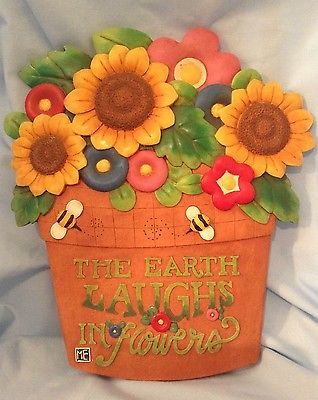
Art by Mary Englebreit…

